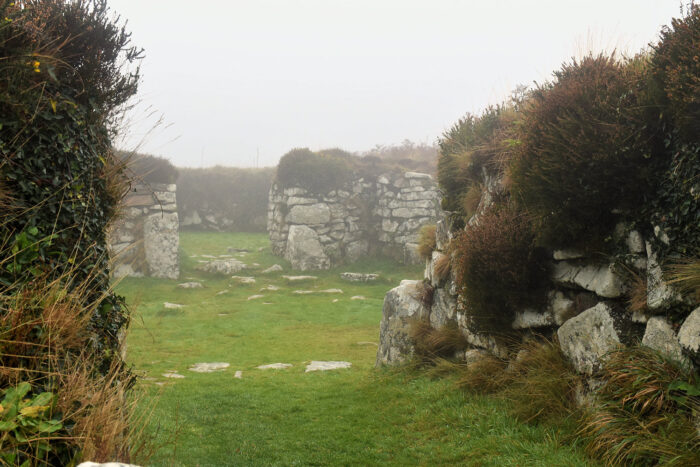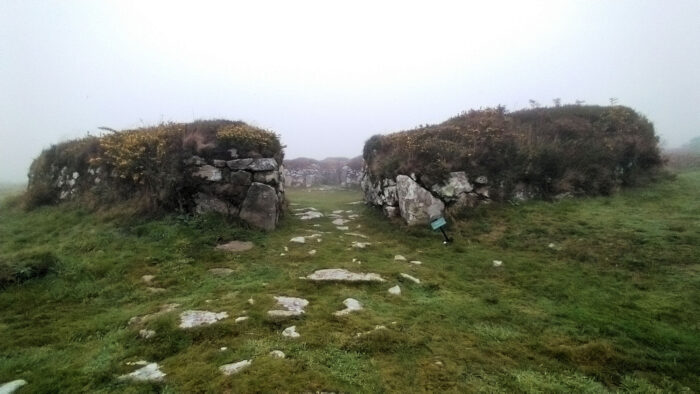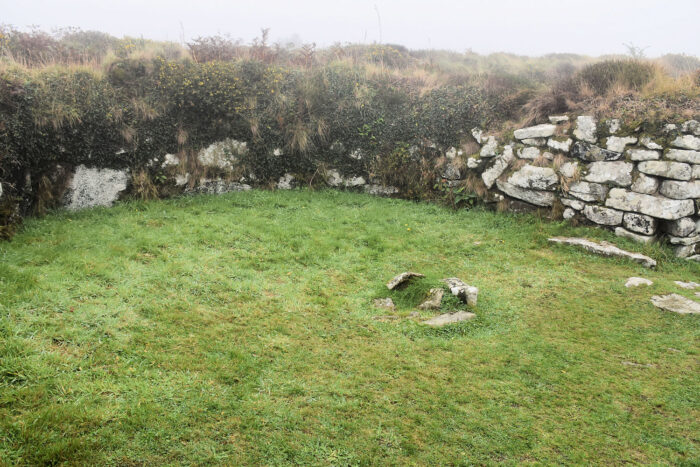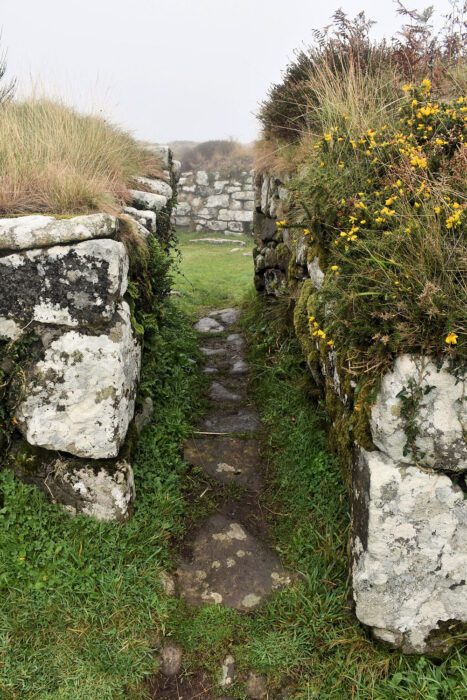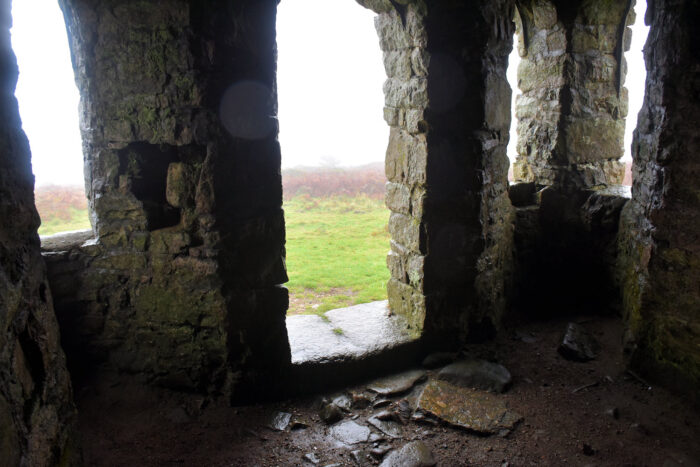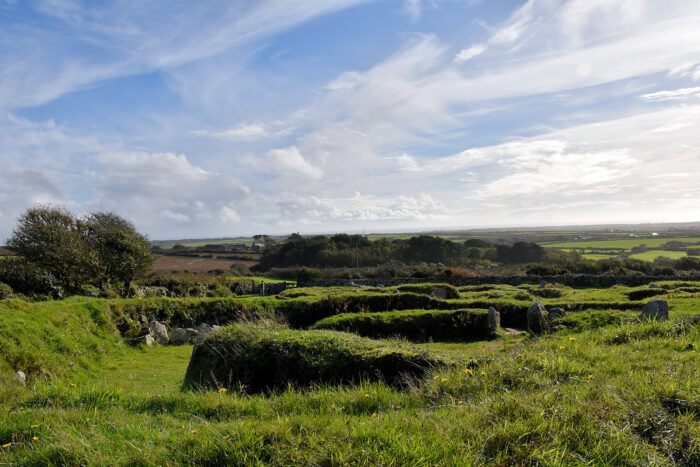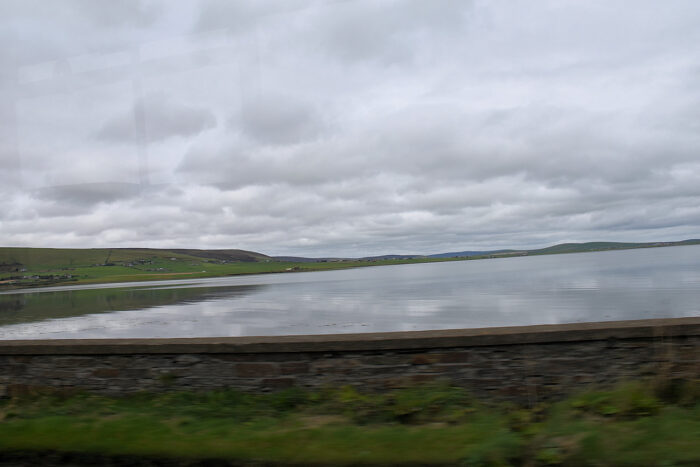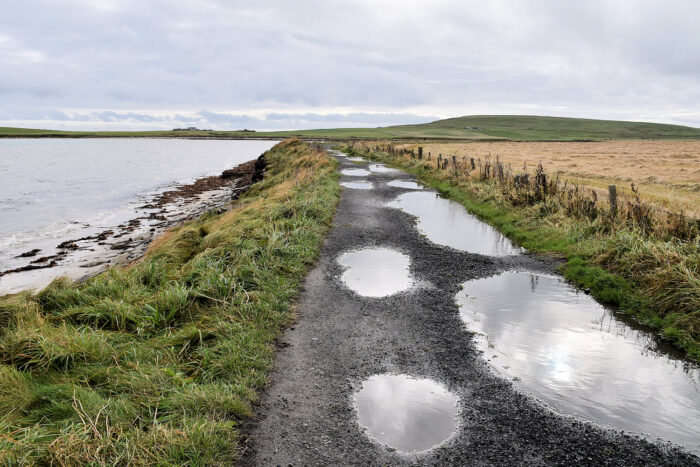This is Chysauster Village. It’s an Iron Age village. In fact, it’s a Romano-British village from the late first to third centuries. That is a settlement of native Britons (Celts if you want) during the time of the Roman occupation of the islands.
Their village is about ten houses, arranged along a long central space not unlike a street. The houses themselves are built with a central courtyard.
Look at the fog. It’s not just surrounding the site but drifting through it. Like being away in another world.
This picture on site shows you what a house might have looked like. On entering the courtyard, the main living space is through a door front of you. To the left is a an area that might have been for livestock. To the right are smaller rooms that might have extra living space, sleeping areas or for livestock
So entrance into house four.
In the courtyard, with the entrance into the main living area in front (and slightly to the left), and some side rooms to the right.
Main living area!
House 6 from above (entrance to the left, the courtyard is mostly behind the “mound” and you can see the doorway into the main living area. It has upright stones on the side and flagstones on the floor. There is also a back door.
The back door.
There are two videos. The first is House 4 and shows all the rooms. The second starts with House 6 and goes through to House 4 but doesn’t show all the rooms. (Also, the sound in the second one is bad because I had to hold phone closer to me and the wind picked up.)
About a mile to the east, but further by road, is Castle an Dinas, an Iron Age fort that might have been the “local administration area” for the villages.
There’s not much left there now but it’s quite wonderful to stand up there, with the rest of world hidden by the fog. In the background there you can see the folly built in the 18th century with stones from the fort.
18th century follies, even those repaired in 1960, aren’t very weatherproof. Fortunately, it was only a short shower.
